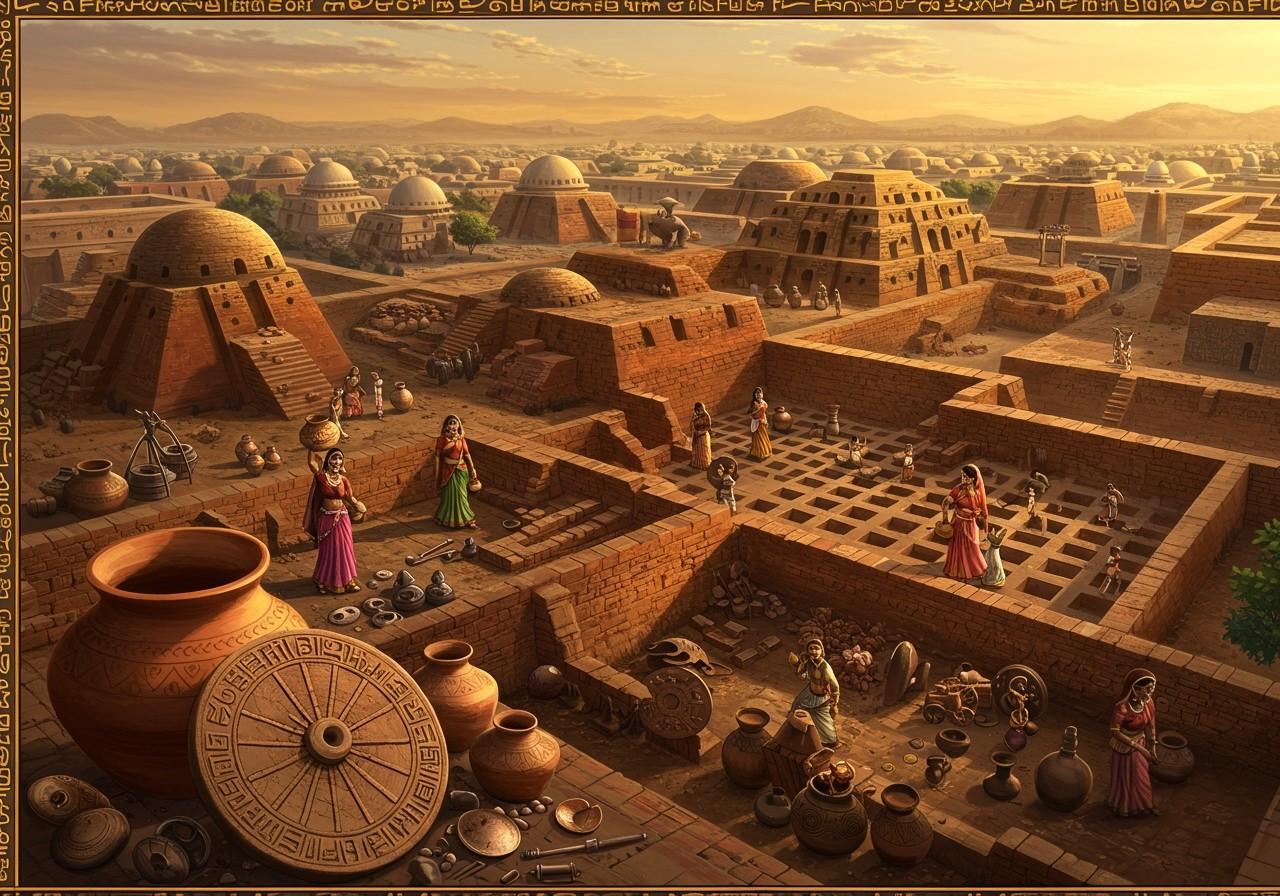
Rakhigarhi stands as a prominent archaeological marvel in India, nestled in Haryana. As a significant part of the ancient Indus Valley Civilization, this site unveils a captivating narrative of early urban settlements. This article delves into Rakhigarhi’s historical importance, geographical context, cultural significance, and ongoing research endeavors.
The Historical Significance of Rakhigarhi
Rakhigarhi flourished as a major urban hub within the Indus Valley Civilization. The Archaeological Survey of India (ASI)’s discovery of seals, pottery, and other artifacts reveals advanced urban planning, sophisticated architecture, and complex social structures. Unlike other Indus Valley sites like Mohenjo-Daro and Harappa, Rakhigarhi provides unique glimpses into intricate trade networks and dynamic economic activities. These insights contribute significantly to our understanding of ancient Indian history and its global connections. Moreover, recent findings indicate that Rakhigarhi might be even larger than Mohenjo-Daro, potentially reshaping our understanding of the civilization’s scale.
Rakhigarhi’s Location in Haryana
Located in Haryana’s Hisar district, Rakhigarhi is accessible from major cities like Delhi and Chandigarh. The regional climate and terrain played a crucial role in shaping settlement patterns. Nearby landmarks include towns like Hansi and Narnaund. The site is currently under continuous archaeological investigation. Haryana’s strategic location is essential for comprehending the broader context of the Indus Valley Civilization. Its proximity to other important sites like Bhirrana, dating back to the 8th-7th millennium BCE, further enriches the region’s archaeological landscape.
Cultural and Ritual Significance of Rakhigarhi
Discoveries at Rakhigarhi have unearthed evidence of diverse cultural practices and rituals. Burial practices unveil ancient beliefs and social hierarchies. Artifacts suggest the presence of religious or ritualistic activities, enriching our understanding of ancient Indian traditions. Preservation efforts for these cultural artifacts continue. Rakhigarhi’s findings influence contemporary cultural practices in Haryana and across India. Local festivals and traditions may have links to Rakhigarhi’s historical significance. The presence of both pre-Harappan and mature Harappan layers at the site offers a unique opportunity to study the evolution of cultural practices over time.
The Legacy of the Indus Valley Civilization in Haryana
The discoveries at Rakhigarhi enhance Haryana’s historical and cultural identity, contributing significantly to modern Indian society. They provide invaluable educational and research opportunities. Museums and institutions diligently preserve and showcase Rakhigarhi’s artifacts. Integrating Rakhigarhi into Haryana’s cultural tourism initiatives can significantly raise public awareness. These discoveries carry broader implications for India’s cultural heritage and historical narrative. The site’s recognition as a potential UNESCO World Heritage Site further underscores its importance.
Current Research and Preservation Efforts
Ongoing archaeological research at Rakhigarhi involves collaborations among various institutions. Advanced excavation methods and recent discoveries continuously expand our knowledge of the site. Government initiatives address the challenges in preserving the site and its delicate artifacts. Cutting-edge technology plays a crucial role in studying and preserving Rakhigarhi for future generations. Public awareness and education are vital for supporting these crucial preservation endeavors. The ongoing research seeks to understand the decline of the civilization and its connection to climate change.
Connecting with the Past: Exploring Cultural Goods at Poojn.in
Poojn.in, India’s leading online store for cultural and religious goods, offers a unique opportunity to connect with the rich heritage of sites like Rakhigarhi. Explore a wide range of products that resonate with the ancient traditions of the Indus Valley Civilization:
- Bel malas: Crafted from sacred wood, these malas can be used in meditation and prayer, reflecting the spiritual practices of ancient civilizations.
- Shiva Lingams: Representing the divine energy, these lingams connect to ancient worship traditions.
- Clay diyas and lamps: These traditional items illuminate homes and sacred spaces, echoing the pottery traditions of the Indus Valley.
Visit Poojn.in today to discover a diverse collection of puja items, handcrafted statues, and spiritual accessories that honor India’s rich cultural heritage.
FAQs on Rakhigarhi
Where is Rakhigarhi located? Rakhigarhi is located in the Hisar district of Haryana, India.
What is the significance of Rakhigarhi? Rakhigarhi is one of the largest known sites of the Indus Valley Civilization, offering crucial insights into urban planning, social structure, and cultural practices of the time.
How old is Rakhigarhi? The site dates back to the mature Harappan phase of the Indus Valley Civilization (c. 2600-1900 BCE), with evidence of earlier settlements going back even further.
What has been found at Rakhigarhi? Excavations have revealed well-planned streets, drainage systems, residential buildings, fortifications, pottery, tools, jewelry, and burial sites, providing a comprehensive picture of life in the ancient city.
Conclusion
Rakhigarhi stands as a testament to the rich tapestry of India’s ancient past. Its location in Haryana offers a unique window into the Indus Valley Civilization. The ongoing research and preservation efforts ensure that this invaluable heritage will continue to inform and inspire future generations. By exploring sites like Rakhigarhi and engaging with platforms like Poojn.in, we can deepen our appreciation for India’s cultural legacy.


